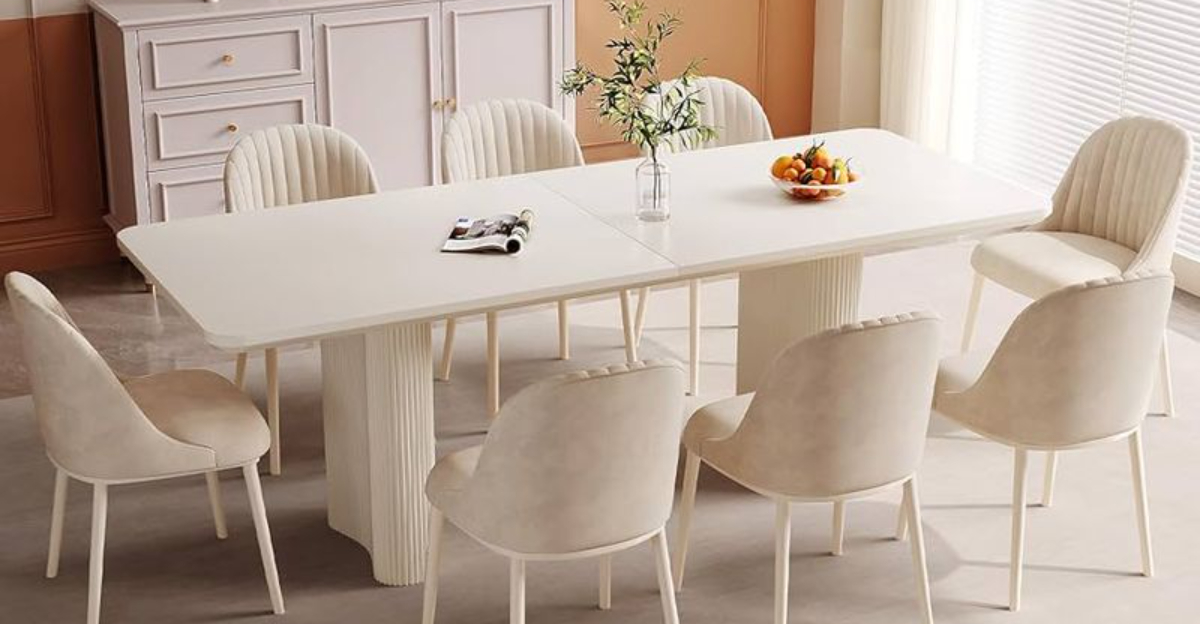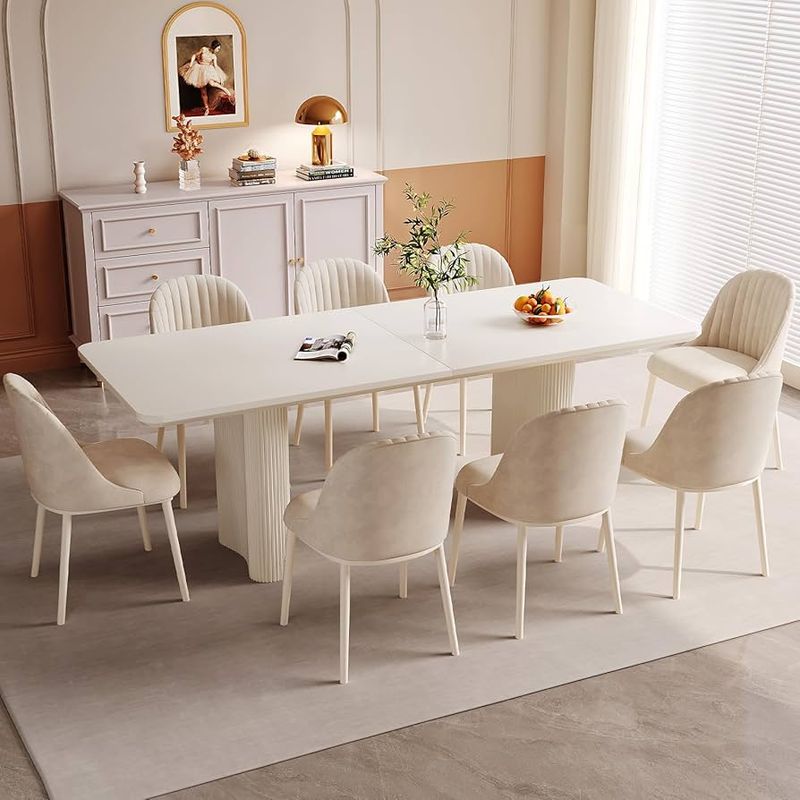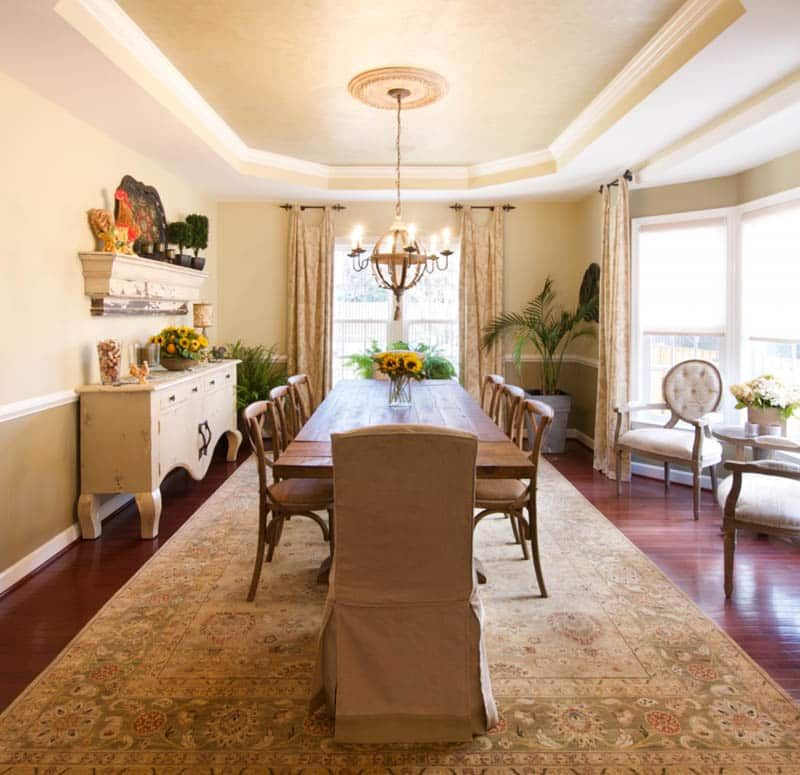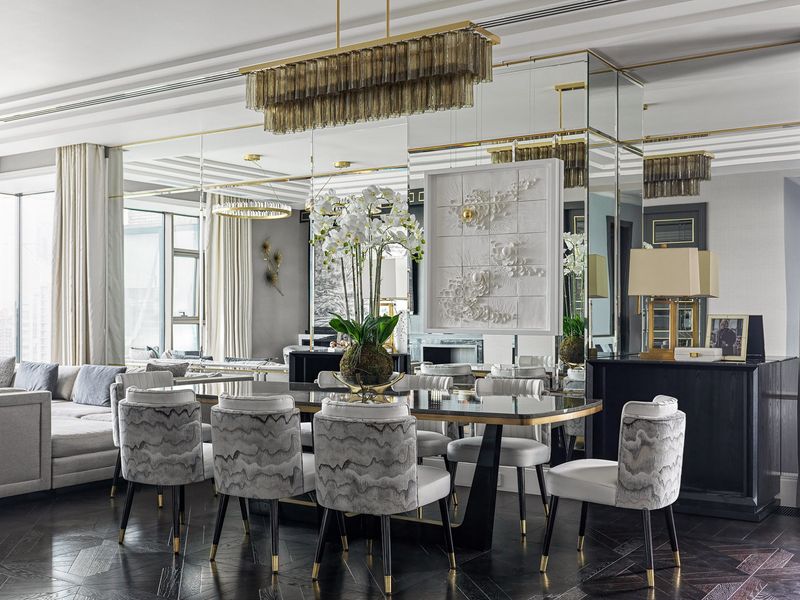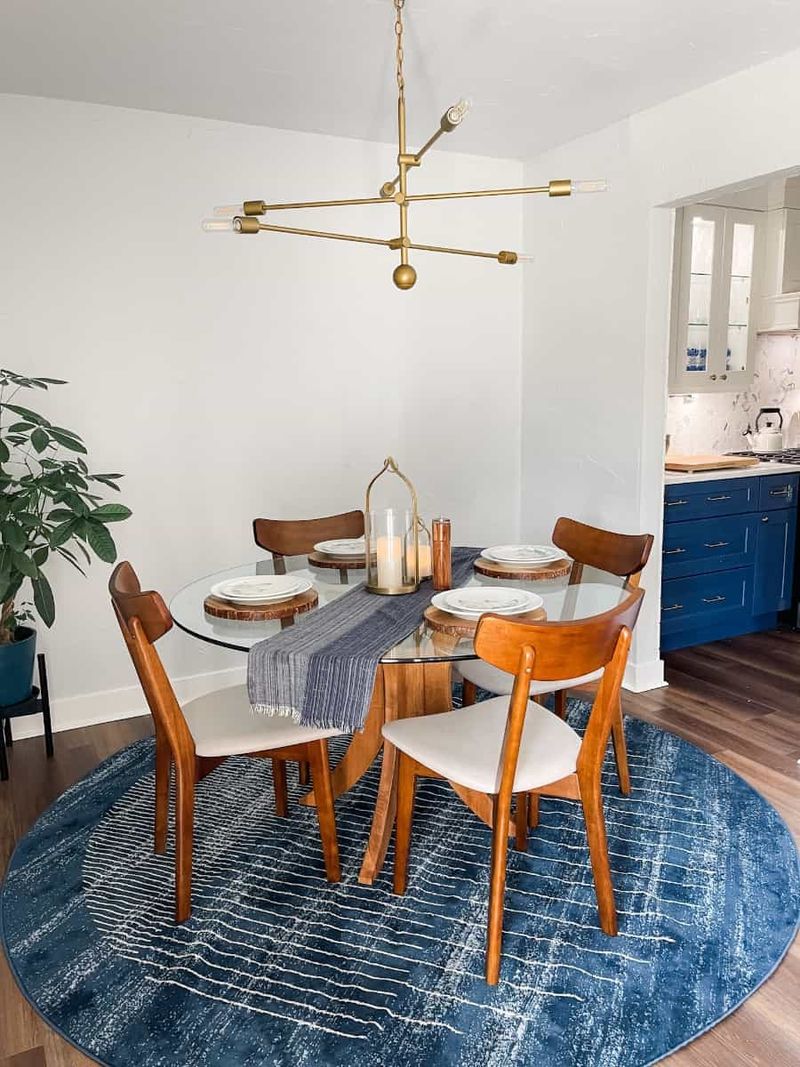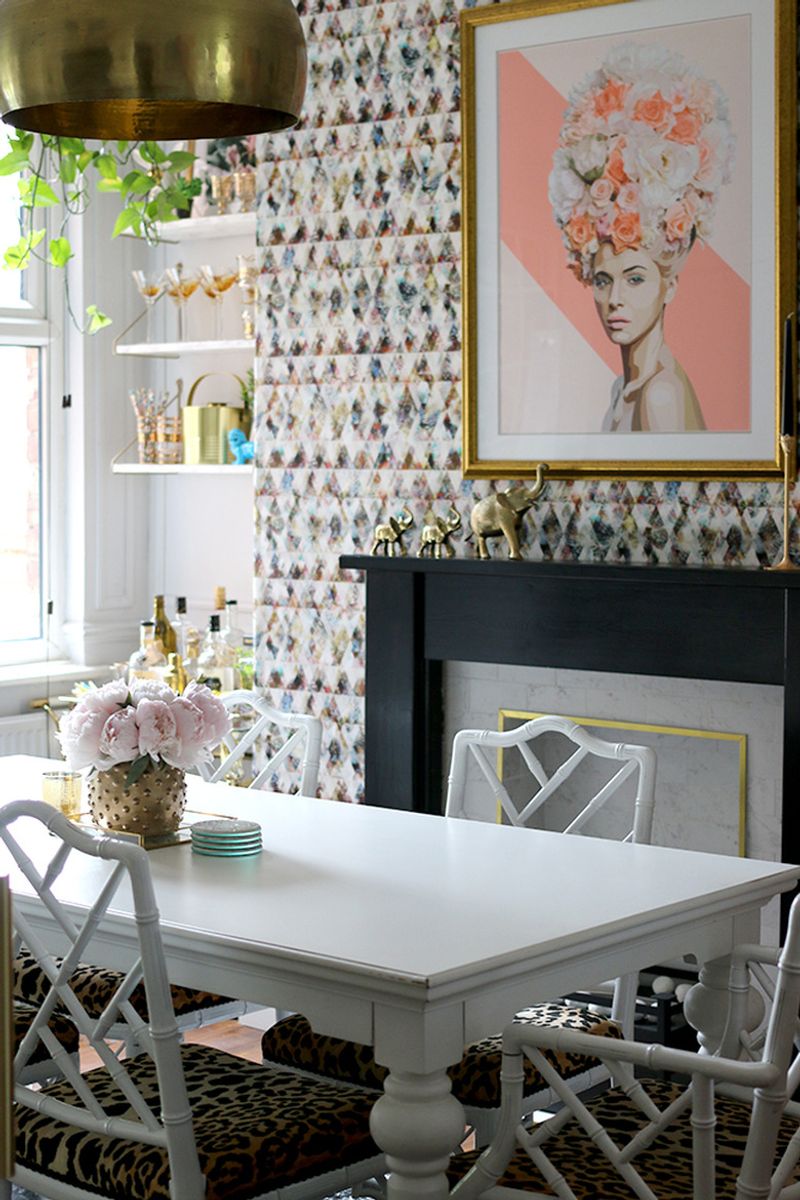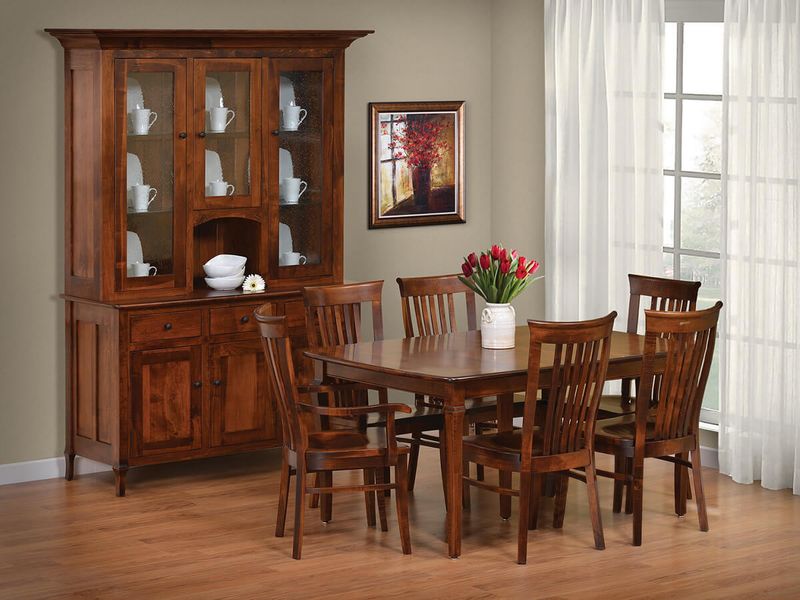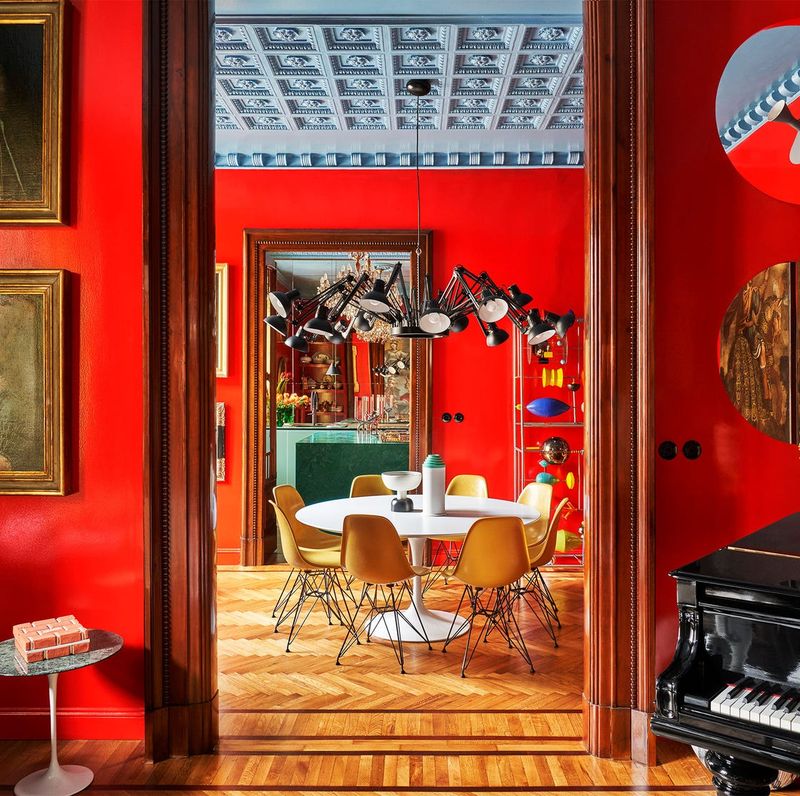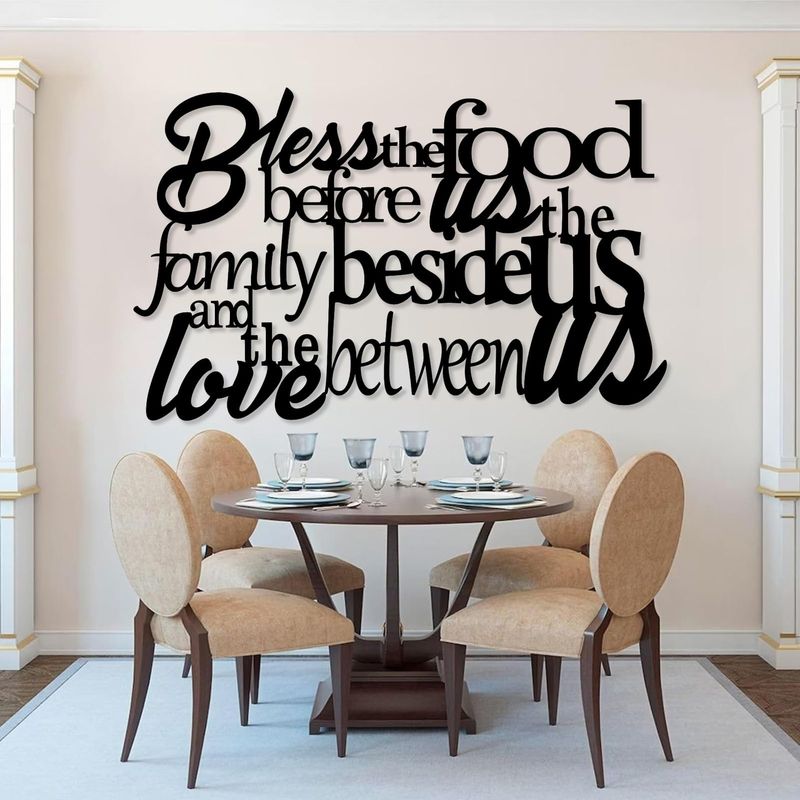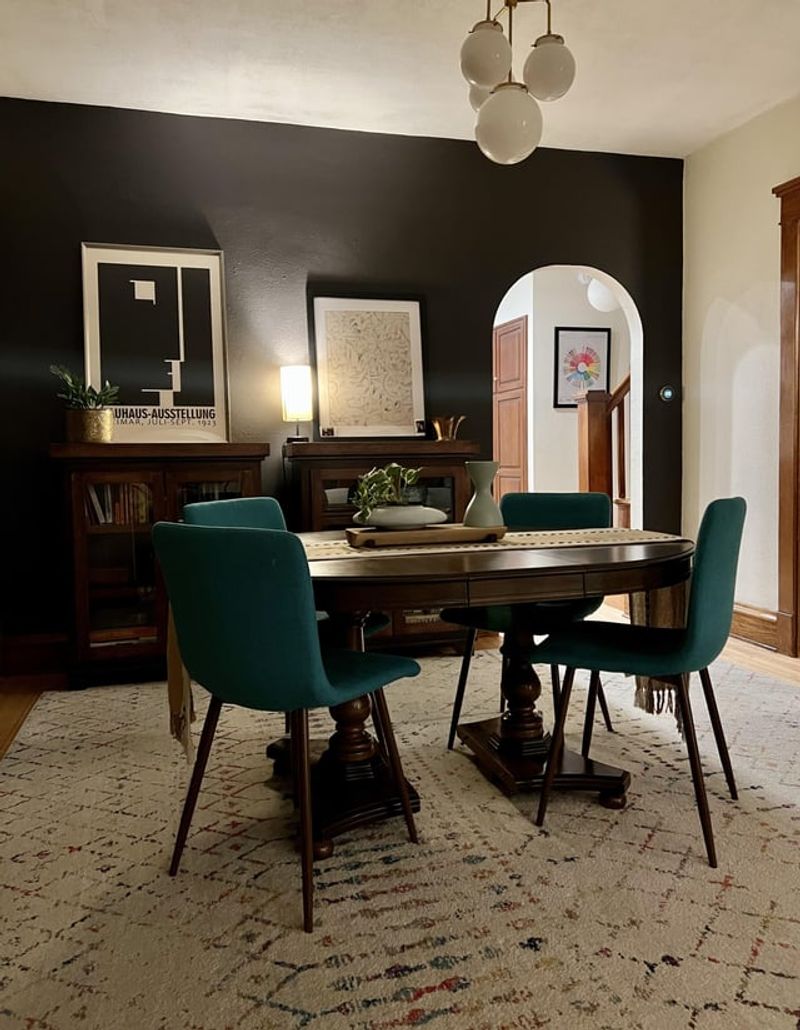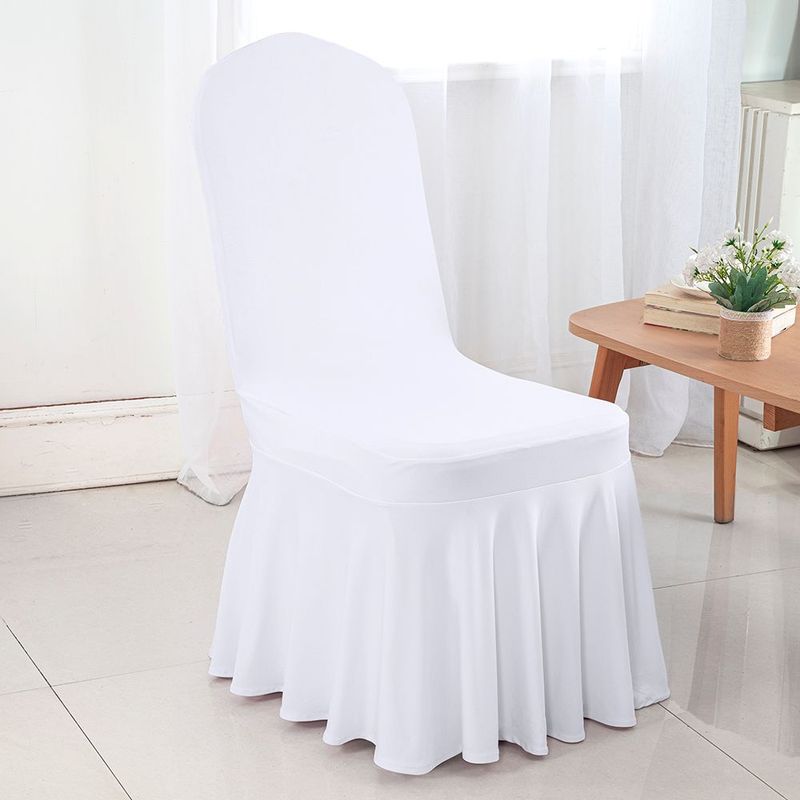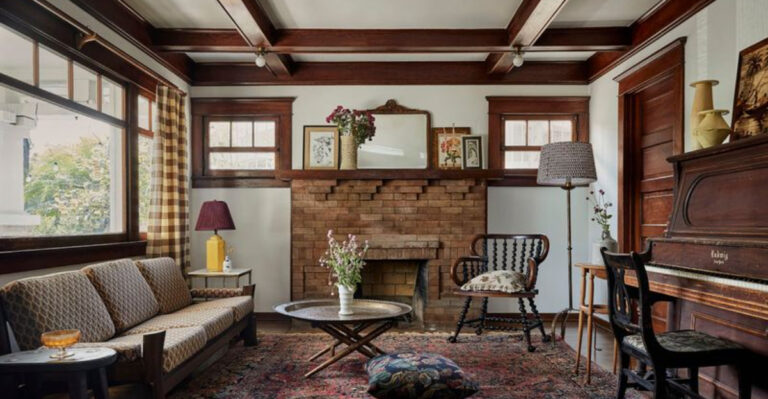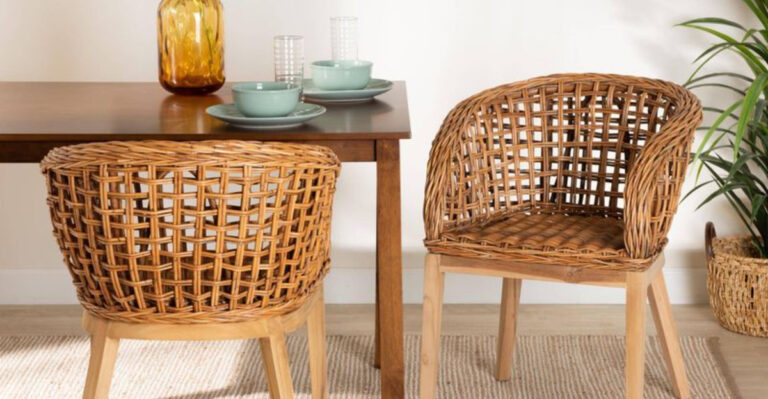10 Dining Room Features That Are Always Eyesores, According To Designers (And 5 You Must Always Avoid)
Some dining rooms make you want to linger over dessert – others just make you want to leave.
Designers agree: a few all-too-common features have a way of dragging down even the best intentions. Clunky lighting, awkward furniture pairings, and décor choices that feel more chaotic than curated can turn a dinner party into a design disaster.
If you want a dining space that truly dazzles (and doesn’t make your guests quietly cringe), these 10 eyesores are worth avoiding — plus 5 more that designers say are absolute deal-breakers.
1. Oversized Furniture
Walking into a dining room where the table and chairs barely leave room to move is like trying to navigate a maze. When guests need to perform gymnastics just to reach their seats, you know you’ve gone too big.
Scale matters tremendously in dining spaces. A properly sized dining set should allow at least 36 inches between the table edge and walls or other furniture pieces, ensuring comfortable movement around the space.
2. Mismatched Dining Sets
Remember that hodgepodge collection of chairs your aunt assembled around her dining table? While eclectic styling can work when done intentionally, randomly assembled dining sets often look like desperate afterthoughts.
The key to successful mixing lies in finding common elements. Chairs should share similar heights, proportions, or design elements to create visual harmony, even when they’re not identical twins.
3. Outdated Chandeliers
That massive brass and crystal monstrosity hanging above your grandmother’s table might have been fashionable decades ago, but now it’s just gathering dust and dating your space. Fixtures that scream their era can drag down an otherwise updated room.
Lighting is essentially jewelry for your dining room. Selecting a fixture with clean lines and appropriate scale brings instant modernization without sacrificing character or the important task of properly illuminating your beautiful meals.
4. Cluttered Sideboards
Your sideboard isn’t meant to be a storage unit for every random item that needs a home. When these surfaces become landing zones for mail, keys, and miscellaneous household debris, they destroy the sophisticated vibe of your dining space.
Think of sideboards as curated display areas. Limit objects to a few intentional pieces that enhance your dining experience—perhaps a wine decanter, a couple of candles, or a meaningful art piece.
5. Overly Themed Decor
Has your Tuscan-inspired dining room gone so far that guests half-expect an Italian waiter to appear? When theme decorating crosses from subtle influence to full-blown replica, you’ve ventured into restaurant territory rather than home dining.
Sophisticated spaces draw inspiration without literal interpretation. Incorporate elements you love from a style or region through textures, colors, or a few select pieces rather than creating a themed dining experience that feels like dinner theater.
6. Mirrored Walls
The 1980s called and they’d like their design trend back! Full mirrored walls might make spaces look larger, but they also create the unsettling experience of watching yourself chew from multiple angles—nobody’s best moment.
Strategic mirror placement can enhance lighting and space without the funhouse effect. A beautiful framed mirror on one wall can reflect light and views while actually contributing to your design scheme rather than dominating it.
7. Low-Quality Rugs
Flimsy, undersized rugs that barely extend beyond the table create a floating island effect that makes your dining area feel disconnected and awkward. Even worse are rugs that can’t stand up to inevitable spills and crumbs. Investment in a proper dining room rug pays dividends in both aesthetics and function.
The ideal rug should extend at least 24 inches beyond the table edge in all directions, allowing chairs to remain on the rug even when pulled out.
8. Busy Wallpaper
Dizzying patterns might look impressive in small doses, but covering your dining room walls with busy, high-contrast wallpaper can create visual chaos. When your background competes for attention with everything else in the room, the space feels unsettled.
If you love pattern, consider more subtle designs with less contrast or limit bold wallpaper to a single accent wall. The best dining spaces allow conversation and food to be the stars of the show.
9. Dusty Artificial Plants
Silk arrangements might have seemed low-maintenance initially, but they’ve become sad, static dust collectors that everyone notices but no one mentions.
If plant maintenance isn’t your strength, consider high-quality faux options that can be regularly cleaned or simple, elegant alternatives like a bowl of real fruit or seasonal natural elements that can be easily refreshed.
10. Bulky China Cabinets
Massive wall-to-wall display units might have been status symbols in previous decades, but today they often feel imposing and dated. When these behemoths dominate the room, they create a heavy, claustrophobic atmosphere.
Modern storage solutions offer lighter alternatives. Consider open shelving for displaying special pieces or smaller, more proportional cabinets that provide storage without overwhelming your space. The goal is balance, not domination.
1. Plastic Slipcovers
Nothing screams “don’t get comfortable” quite like the crinkle of plastic beneath your thighs. Those transparent protectors might preserve your upholstery, but they kill the ambiance faster than you can say “formal dining.”
If protection is your concern, consider washable slipcovers in beautiful fabrics instead. Modern performance textiles offer stain resistance without the sticky, noisy experience of sitting on what essentially amounts to kitchen wrap.
2. Loud Wall Colors
Vivid red might seem appetizing in theory, but living with fire-engine walls quickly becomes overwhelming. Intense colors can dominate a space, making it feel smaller and influencing how food appears on the plate—not always in a good way.
Softer, more subtle hues create elegant backdrops that don’t compete with your food or conversation. If you crave color, consider using bold shades as accents through artwork or table linens rather than covering entire walls.
3. Generic Wall Art
Those mass-produced canvas prints of coffee cups with French phrases aren’t fooling anyone. Generic, impersonal art lacks the character and story that make dining rooms feel special and connected to the people who live there.
Walls deserve thoughtful attention. Select pieces that genuinely move you or reflect your personal journey. Even simple framed photographs you’ve taken yourself carry more meaning than anonymous store-bought art that appears in thousands of other homes.
4. Poor Lighting
Harsh overhead lighting can make your dining room feel more like an interrogation chamber than a place for pleasant meals. Shadows cast downward on faces create unflattering appearances that no one appreciates during dinner.
Layered lighting transforms the atmosphere. Combine ambient lighting with a properly hung pendant or chandelier (30-36 inches above the table) and perhaps some accent lighting to highlight architectural features for a space that feels intentionally designed.
5. Chair Covers
Unless you’re hosting a wedding reception, those formal white chair covers with bows have no place in your home dining room. They transform comfortable seating into stiff, unwelcoming obstacles that make guests feel they shouldn’t relax.
Quality dining chairs should be beautiful enough to stand on their own. If your chairs need refreshing, consider reupholstering them in durable, stain-resistant fabric that complements your décor while still being practical for everyday use.

